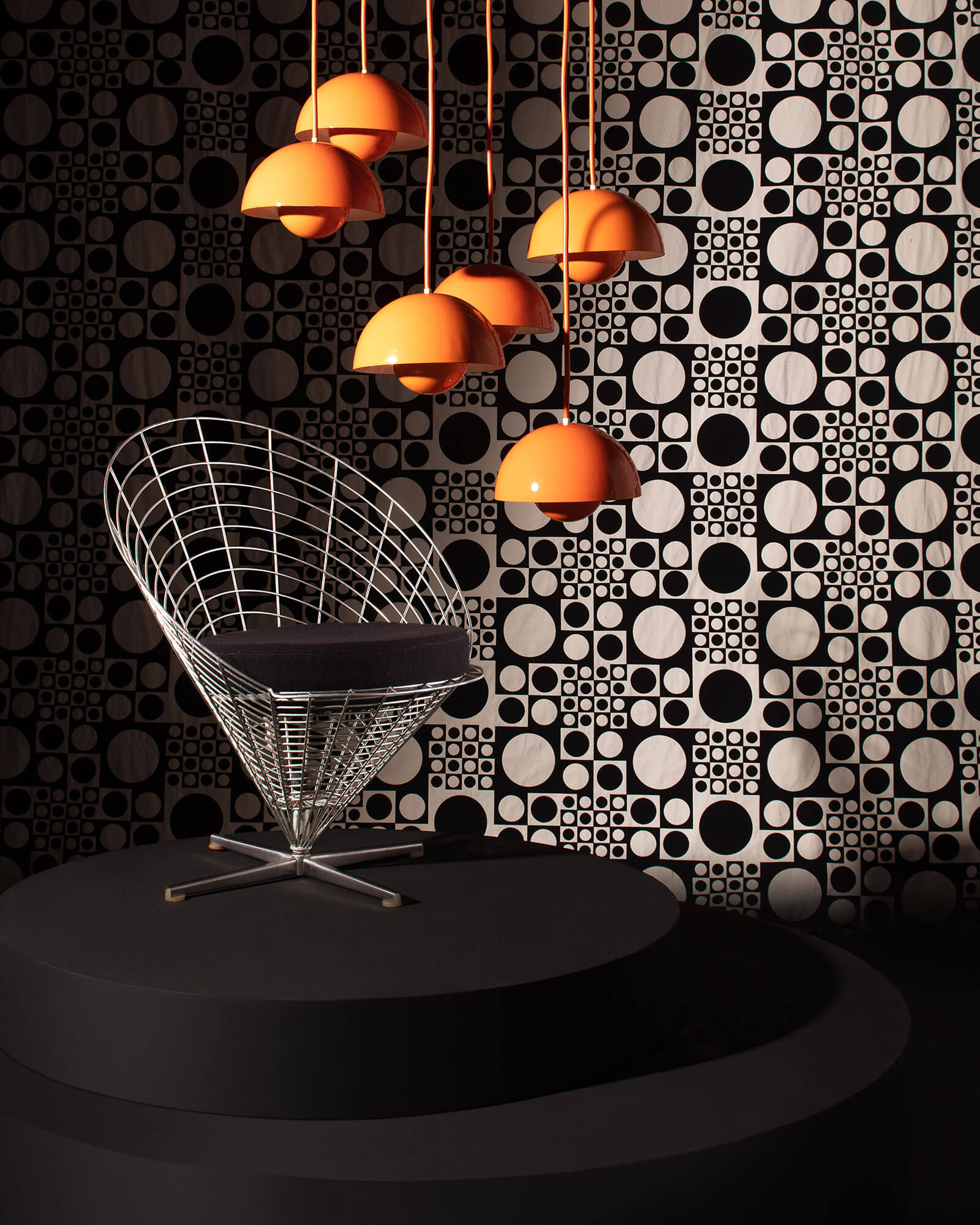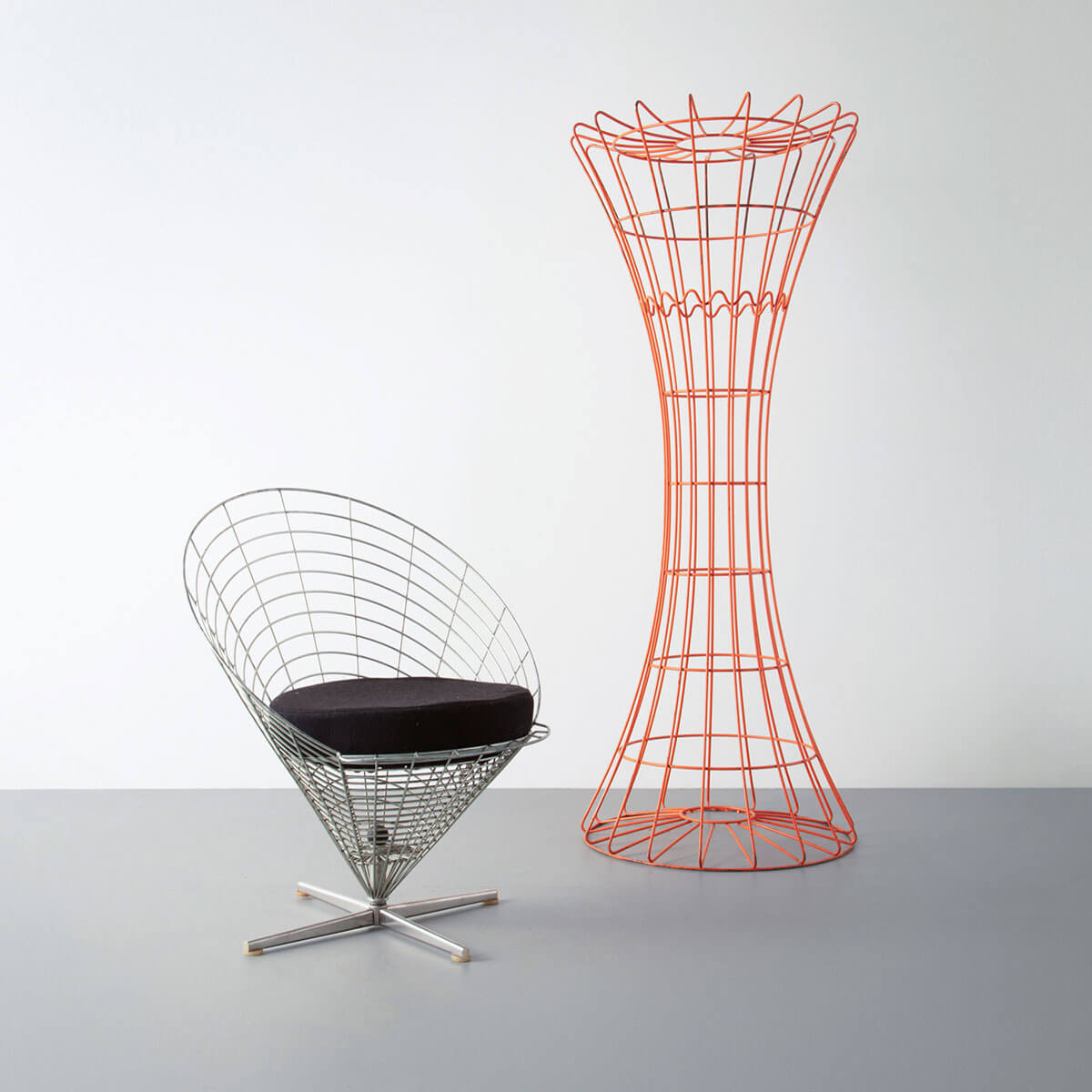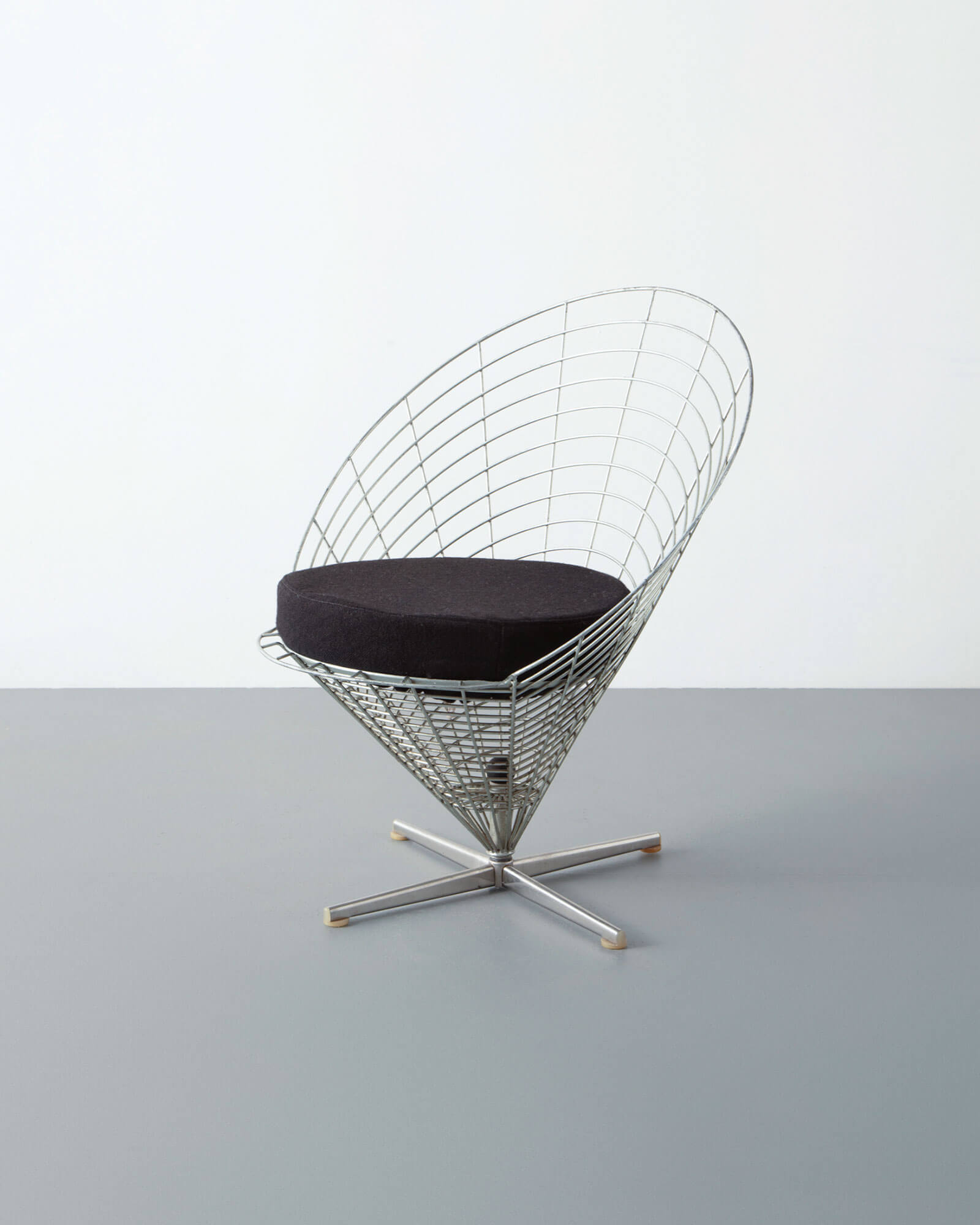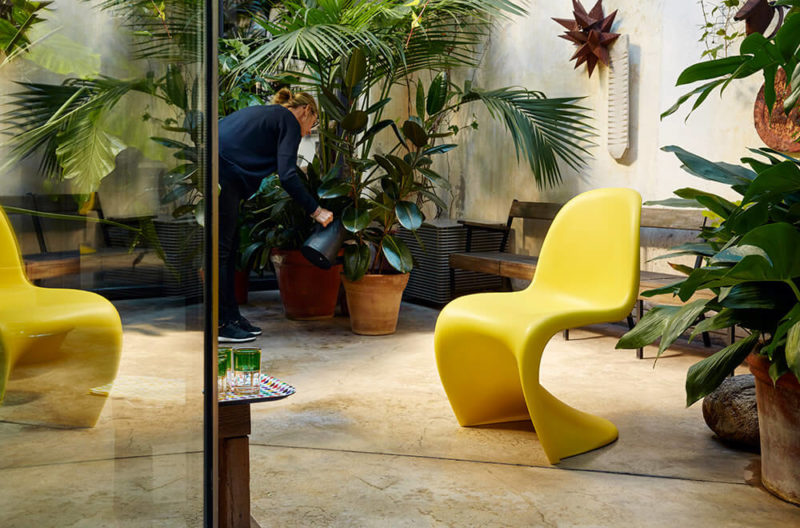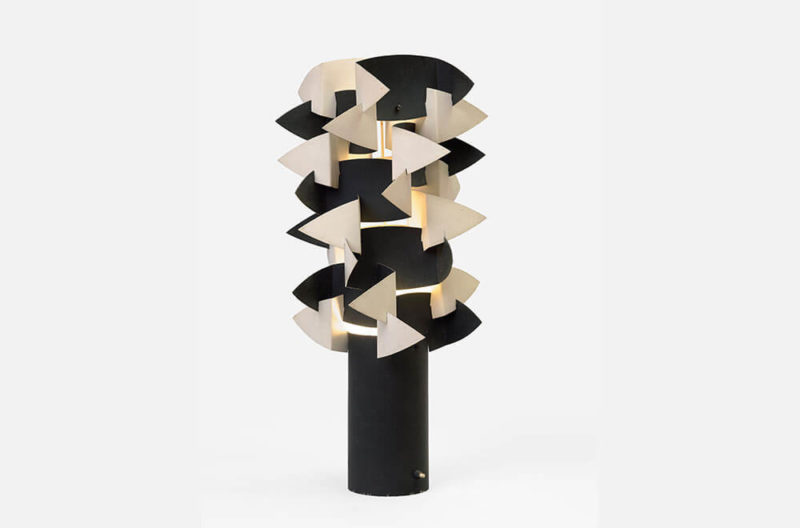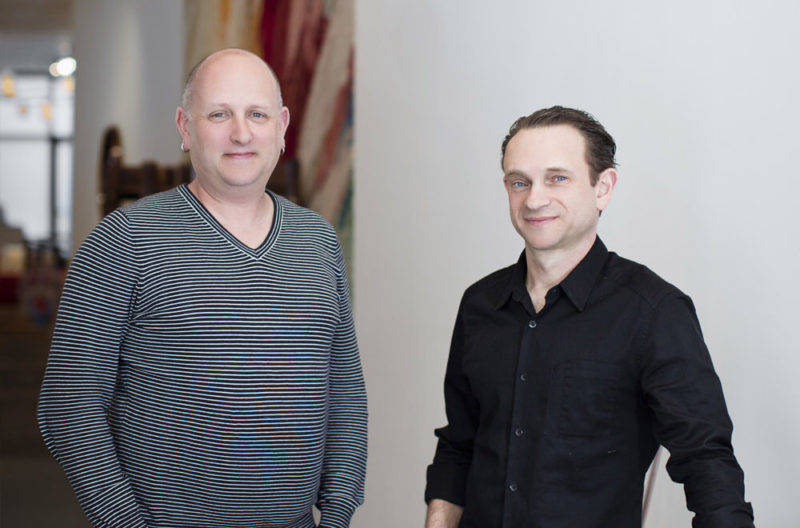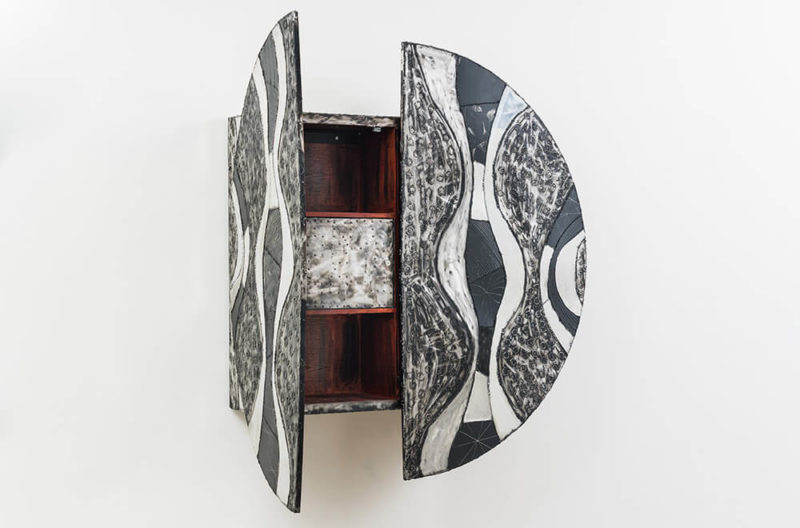‘Wire Cone Chair’, 1960
Verner Panton
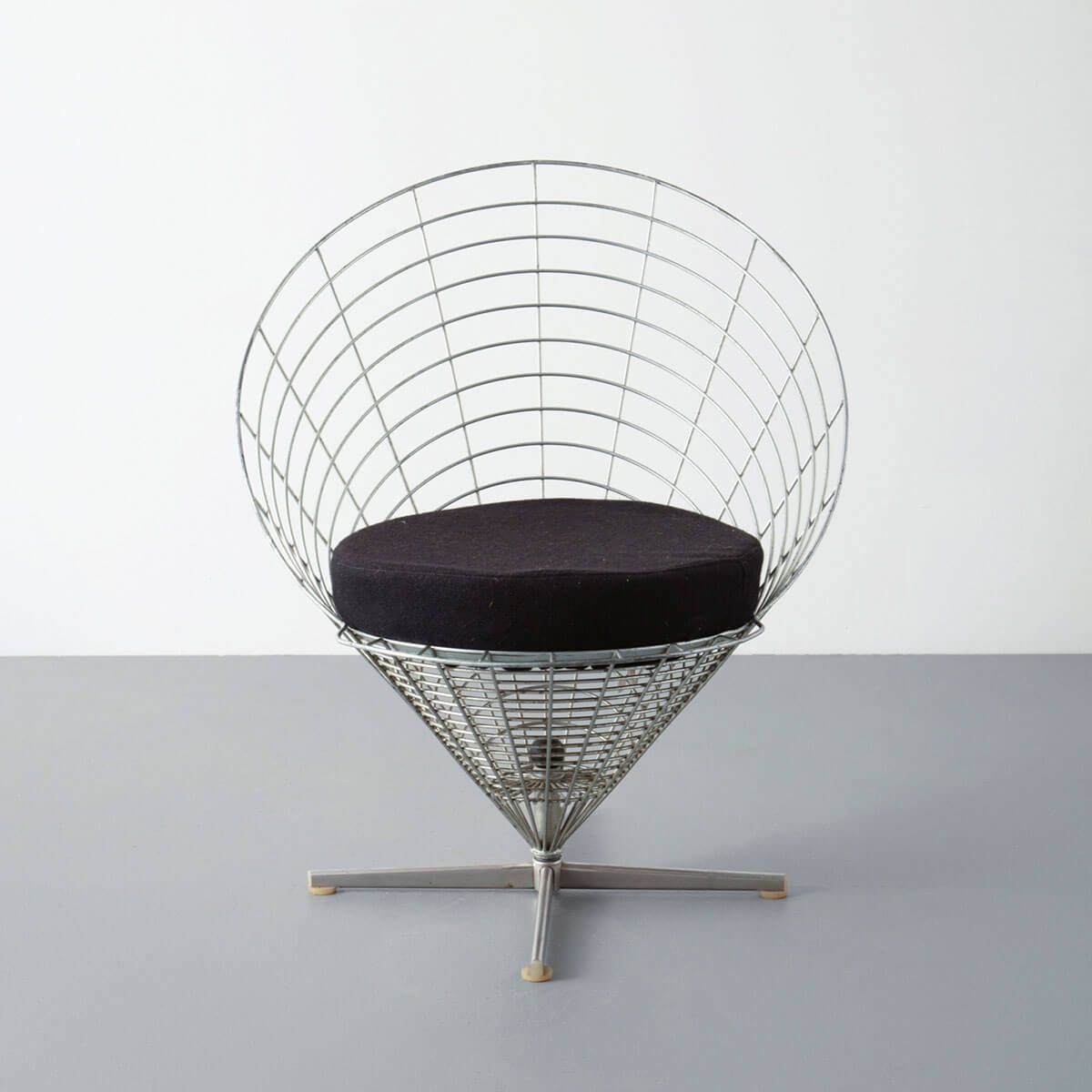
Verner Panton , ‘Wire Cone Chair’, 1960
COURTESY: R & Company
AT THE FOREFRONT of the Late Modern Space Age era, Verner Panton brought Danish Design into the 1960s. His unabashed championing of mould-injected plastics and splashy colours helped define the period, one that was marked by many social and cultural shifts. He brought back pattern and texture to an industry that had been mired in the rigidity and austerity of the International style. Through the prolific output of chairs, lamps, textiles and other furnishings that defied standard typologies and material applications, Panton promoted play, freedom, good sensation, emotional response, and experimentation – tenets that aligned well with the revolutionary zeitgeist of the time.
Originally produced by Danish manufacturer Plus-Linje in 1960, the ‘Wire Cone Chair’ was a groundbreaking formal expression of its time. Spun as an inverted conoid, the design’s open metal wire structure seems to have been cut open to facilitate a seat. Perhaps more hemispherical in articulation than organic – as evident in many of his other iconic works – this chair takes on an almost architectonic quality with its radial grid. It was a feat of engineering and ergonomics to balance the weight of a user on a single locus point. The ‘Wire Cone Chair’ was perhaps most famously implemented in Panton’s outfitting of the Trondheim, Norway Astoria Hotel. Though the design gained popularity again during the height of Postmodernism in the 1980s and is firmly entrenched as a design classic, it might have been perceived as dusty and outdated in recent decades.
Through a new retrospective, New York’s R & Company is seeking to shake off this stigma. Much of this lack of interest can be attributed to a scarcity of original works. The gallery’s founders worked tirelessly over the past three years to source rarely-seen-before works. The Verner Panton exhibition brings together an impressive 50 works in masterly-staged vignettes that seem to have been directly extracted from the 1960s. Joining the ‘Wire Cone Chair’ is a period-appropriate wallcovering and the painted 1968 ‘Flower Pot’ pendant lamp. The showcase, which seeks to reveal the designer’s radical influence on contemporary design, also commemorates the 20th anniversary of the gallery’s first Panton showcase and the introduction of his wares to the US market.
“In many ways, we take for granted what Panton achieved in his career,” says R & Company co-founder Zesty Meyers. “When he first opened his studio in the 1950s, no one was working with curved forms and bold colour, layering patterns and breaking functional objects out of their most rigid and recognisable forms. He had an incredible vision that was grounded in deep intellectual theory about the importance of imagination. Today, we understand these experiences as common, which is a testament to his success and importance. There isn’t a designer that works in colour that hasn’t been influenced by Panton, whether consciously or subconsciously.”
-
Verner Panton , ‘Wire Cone Chair’, 1960
COURTESY: R & Company
-
Verner Panton , ‘Wire Cone Chair’, 1960
COURTESY: R & Company
-
Verner Panton , ‘Wire Cone Chair’, 1960
COURTESY: R & Company
Verner Panton at R & Company runs until 8th January, 2021.

